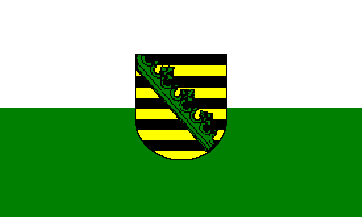



The Kingdom of Saxony, a German state since 1180, was a member state of the German Confederation from 1815 to 1866. The Wettin dynasty split in 1547 and the junior Albertine line took over Saxony. The senior line took over the Thüringian area. In the Prussia and Austria war of 1866, Saxony declined Prussia’s offer of neutrality, and the Saxon army joined the Austrians. The Prussians occupied the entire kingdom. On the conclusion of peace, Saxony lost no territory, but had to pay a war indemnity of ten million Thalers, and was compelled to enter the North German Confederation. The military, postal and telegraph systems were placed under Prussia’s control. The Saxon military became a contingent of the Prussian army on 7 February 1867. Almost everybody understands that XII and XIX Corps represented the entire Saxon army. However, there was a Saxon infantry Regiment number 105 that was stationed in Alsace-Lorraine as part of XV Corps. Saxony became a member state of the Imperial German Empire in 1871. Within Imperial Germany, Saxony ranked fifth in area, third in population and first in density of population. In 1914, the population of Saxony was 4,986,000. Saxony was the most densely populated state in the empire, and its population increased at a more rapid rate than any of the larger German states. No kingdom had so large a proportion of urban population, forming 52.97 percent of the whole. About 94 percent of the inhabitants were Protestants; about 12,500 were Jews, and about 4.7 percent, including the royal family, were Roman Catholics. There was a neighboring Prussian province of Saxony that had the same name.
Saxony was a hereditary constitutional monarchy with four votes in the Bundesrat and twenty-three deputies in the Reichstag. Saxony was known as the “Red Kingdom”, when in 1903 with universal suffrage, 22 of 23 Reichstag deputies were Social Democrats. The parliament of the kingdom had two chambers known as the Ständekammer. The upper chamber consisted of princes, certain members of the nobility and prominent men appointed by the King. The lower chamber consisted of 43 members from the towns and 48 from the country, elected for six years. All male citizens 25 years and older who paid three marks per annum in taxes had the vote. The number of Social Democratic delegates in the Kingdom’s parliament increased steadily. As a result, in 1896 a new electoral law was passed, introducing indirect elections and a franchise based on a three-tier system. In 1901, this eliminated the Socialists from the kingdom’s parliament, but by 1903, the Social Democrats were the overwhelming majority in the imperial Reichstag. This changed further in 1909 with plural voting of between one and four votes determined by the amount paid in direct taxation.
King George of Saxony died on 15 October 1904; his son as King Frederick Augustus III succeeded him until his abdication in 1918. Frederick Augustus III was the only German royal who renounced his own rights for the throne, but not his family’s rights. The 800-year plus reign of House Wettin ended with his abdication. Frederick Augustus III’s son, Crown Prince Georg of Saxony gave up his succession rights to become a Jesuit priest in 1923.
The most talked about scandal in Saxony was the Crown Princess Louise’s (the wife of Friedrich August) flight in December 1902 with André Giron, who had been the French tutor to her three children. When she and Friedrich August married, he was the Crown Prince. She was very popular in Saxony, as she did not follow the etiquette at the court, which resulted in arguments with her father-in-law. On 9 December 1902, pregnant with her youngest daughter, she left Saxony with Giron but without her children. She was divorced 11 February 1903. Her last child with Friedrich August was sent to Dresden to live at the court. Louise’s Italian father awarded her the title of Countess of Montignoso. The relationship with Giron did not last and on 25 September 1907, she married the musician Enrico Toselli in London. They were divorced five years later. She died in poverty in Brussels in 1947.
Consuls were maintained for trade with Argentina, Bavaria, Belgium, Libya, Brazil, Bremen, Chile, Colombia, Costa Rica, Denmark, Dominican Republic, Ecuador, France, Greece, Great Britain, Guatemala, Austria-Hungary, Prussia, Russia, Honduras, Italy, Mexico, Nicaragua, the Netherlands, North America, Paraguay, Peru, Portugal, Rumania, Sweden, nor we, Switzerland, Serbia, Spain, Turkey, Uruguay, and Württemberg.
The capital city was Dresden the 3rd largest city in the empire. In 1914, the population of Saxony was 4.986 million.

